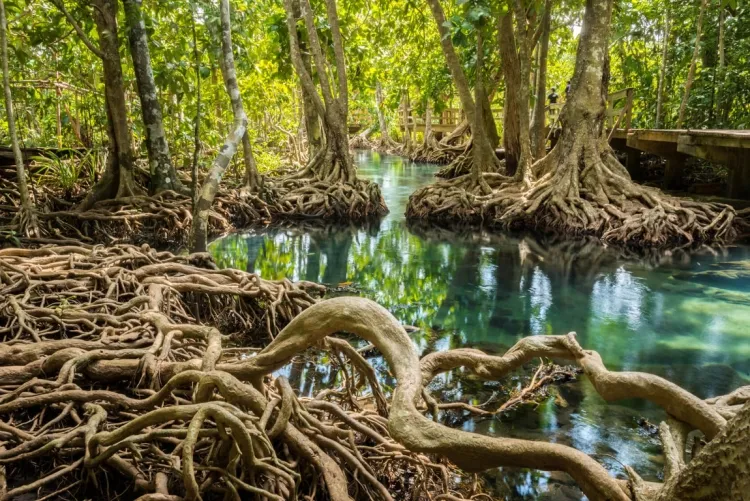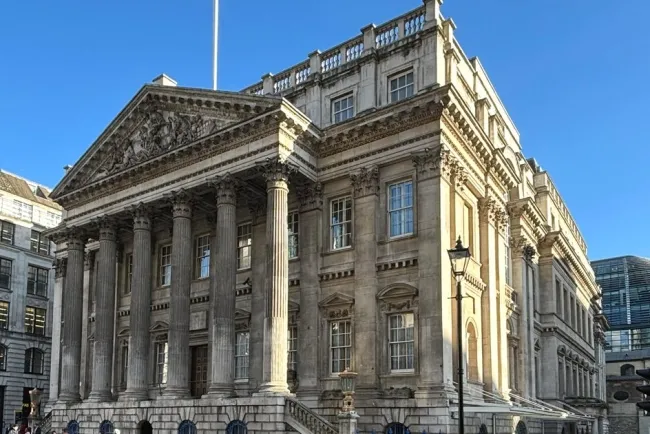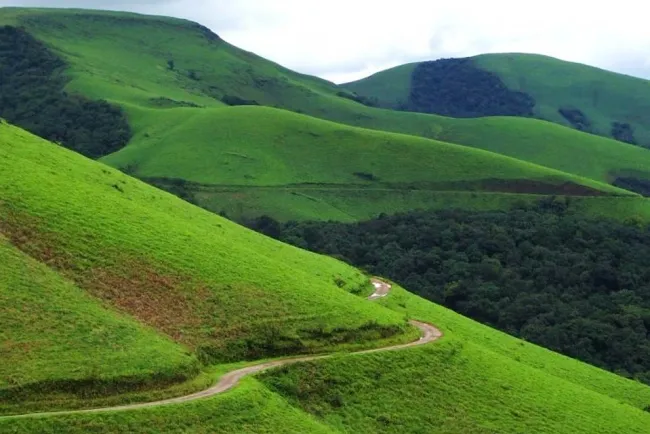Mangrove Forests: Nature's Coastal Guardians...!!!
Mangrove forests are invaluable ecosystems that provide a myriad of ecological, economic, and social benefits. They protect coastlines, support biodiversity, and play a crucial role in climate regulation.

Characteristics of Mangrove Forests
1. Unique Root Systems:
- Mangroves have specialized roots such as prop roots, pneumatophores, and buttress roots that provide stability and facilitate gas exchange in oxygen-poor soils.
- These roots form a complex network that traps sediment and reduces coastal erosion.
2. Salt Tolerance:
- Mangrove species have various adaptations to cope with high salt levels, such as salt-excreting leaves and salt-filtering roots.
3. Biodiversity Hotspots:
- Mangrove forests support a rich diversity of life, including fish, crustaceans, birds, and other wildlife.
- They serve as nurseries for many marine species, offering shelter and food for juvenile fish and invertebrates.

Ecological Importance of Mangrove Forests
1. Coastal Protection:
- Mangroves act as natural barriers against storm surges, tsunamis, and coastal erosion, protecting inland areas and human settlements.
- Their root systems stabilize shorelines by trapping sediments and reducing wave impact.
2. Carbon Sequestration:
- Mangrove forests significantly mitigate climate change by sequestering large amounts of carbon in their biomass and sediment.
- They store up to ten times more carbon per unit area compared to terrestrial forests.
3. Water Quality Improvement:
- Mangroves filter pollutants and excess nutrients from runoff, enhancing water quality in coastal areas.
- Their root systems trap sediments, preventing them from smothering coral reefs and seagrass beds.
4. Habitat for Wildlife:
- Mangrove forests provide critical habitats for a wide range of species, including fish, birds, reptiles, and mammals.
- They are essential breeding grounds for many commercially important fish species.
Human Benefits from Mangrove Forests
1. Livelihoods:
- Many coastal communities rely on mangrove forests for their livelihoods, harvesting fish, crustaceans, and other resources.
- Mangroves also support industries such as tourism and aquaculture.
2. Cultural Significance:
- Mangroves hold cultural and spiritual importance for many indigenous and local communities.
- They are often associated with traditional practices and folklore.
3. Ecosystem Services:
- Mangrove forests provide a range of ecosystem services, including shoreline protection, water filtration, and carbon storage.
- These services contribute to the well-being and resilience of coastal communities.

Challenges and Threats to Mangrove Forests
1. Deforestation:
- Mangrove forests are being cleared at an alarming rate for agriculture, aquaculture, urban development, and logging.
- Deforestation leads to loss of biodiversity, coastal erosion, and reduced carbon sequestration.
2. Climate Change:
- Rising sea levels, increased storm intensity, and changing precipitation patterns pose significant threats to mangrove ecosystems.
- Climate change can alter the distribution and health of mangrove forests.
3. Pollution:
- Mangroves are vulnerable to pollution from agricultural runoff, oil spills, and industrial waste.
- Contaminants can harm the plants and the diverse species that depend on them.
Conservation Efforts
1. Protected Areas:
- Establishing marine protected areas (MPAs) and mangrove reserves helps safeguard these critical ecosystems.
- MPAs restrict harmful activities and promote sustainable use of mangrove resources.
2. Restoration Projects:
- Reforestation and restoration projects aim to rehabilitate degraded mangrove forests.
- Community-based initiatives involve local residents in planting and maintaining mangroves.
3. Sustainable Practices:
- Promoting sustainable aquaculture, forestry, and tourism practices can reduce the pressure on mangrove forests.
- Education and awareness campaigns highlight the importance of mangroves and encourage conservation efforts.
Mangrove forests are invaluable ecosystems that provide a myriad of ecological, economic, and social benefits. They protect coastlines, support biodiversity, and play a crucial role in climate regulation. However, these vital habitats face significant threats from human activities and climate change. Concerted efforts are needed to conserve and restore mangrove forests, ensuring their survival for future generations and the continued well-being of coastal communities.
What's Your Reaction?

















